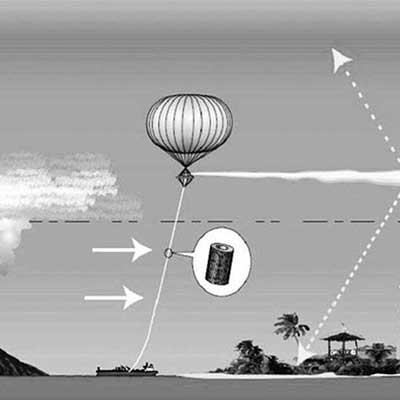Date: 28/02/2023
Relevance: GS-1: Important Geophysical phenomena such as climate change, Heatwave.
Key Phrases: Heat Waves, India Meteorological Department (IMD), Pre maturing and Intensification, La Nina, El Nino, Declining Lapse Rate, Role of Upper Atmospheric Westerly Winds
Why in News?
- In the week of February 21, the India Meteorological Department (IMD) warned that the maximum temperatures over northwest, west, and central India would be 3-5° C higher than the long-term average.
Key Highlights:
- On February 21 itself, the national capital recorded its third hottest February day (33.6° C) in more than five decades.
- In the week before, the IMD had warned of heat waves in the Kutch and Konkan regions, only to withdraw them after a sea breeze came to the rescue.
- Irrespective of whether these are freak occurrences, heat waves are expected to become more intense, longer, and more frequent over the Indian subcontinent.
What Are Heat Waves?
- According to the IMD, a region has a heat wave if its ambient temperature deviates by at least 4.5-6.4° C from the long-term average.
- There is also a heat wave if the maximum temperature crosses 45° C (or 37° C at a hill station).
Pre-Maturing And Intensification:
- The heat wave ‘season’ started earlier in 2022 and was more intense than the long-term average, and had more waves.
- The 2022 heatwave season was also unusual because the heat waves extended much further south into peninsular India due to a north-south pressure pattern set up by the La Niña, a world-affecting weather phenomenon in which a band of cool water spreads east-west across the equatorial Pacific Ocean.
- The last three years have been La Niña years, which has served as a precursor to 2023 likely being an El Niño year. (El Niño is a complementary phenomenon in which warmer water spreads west-east across the equatorial Pacific Ocean.)
- Heat waves tend to be confined to north and northwest India in El Niño years.
Reasons For Formation Of Heat Waves:
- Warmer air is flowing in from elsewhere or because something is producing it locally.
- Air is warmed locally when the air is warmed by higher land surface temperature or because the air sinking from above is compressed along the way, producing hot air near the surface.
Study By Nature Geoscience: How Different Processes Contribute To The Formation Of A Heat Wave?
- Source of warm air:
- In spring, India typically has air flowing in from the west-northwest which is unfavorable for India as the Middle East is warming faster than other regions in latitudes similarly close to the equator, and serves as a source of the warm air that blows into India.
- Role of mountains of Afghanistan and Pakistan:
- Air flowing in from the northwest rolls in over the mountains of Afghanistan and Pakistan leading to compression on the leeward side of these mountains, entering India with a bristling warmth.
- Warming of the Arabian sea:
- The air flowing over the oceans is expected to bring cooler air since land warms faster than the oceans, and thus, the Arabian Sea is warming faster than most other ocean regions.
- Role of upper atmospheric westerly winds:
- The strong upper atmospheric westerly winds that come in from the Atlantic Ocean over to India during spring control the near-surface winds.
- Any time winds flow from the west to the east, winds are blowing faster than the planet itself, which is also rotating from west to east.
- The energy to run past the earth near the surface, against the surface friction, can only come from above.
- This descending air compresses and warms up to generate some heat waves.
- Declining lapse rate:
- The lapse rate, the rate at which temperatures cool from the surface to the upper atmosphere is declining under global warming.
- In other words, global warming tends to warm the upper atmosphere faster than the air near the surface.
- This in turn means that the sinking air is warmer due to global warming, and thus produces heat waves as it sinks and compresses.
Other Factors Affecting The Formation Of Heat Waves:
- The other factors that affect the formation of heat waves are the age of the air mass and how far it has traveled.
- The north-northwestern heatwaves are typically formed with air masses that come from 800-1,600 km away and are around two days old.
- Heat waves over peninsular India on the other hand arrive from the oceans, which are closer (around 200-400 km) and are barely a day old. As a result, they are on average less intense.
- The area covered by these heat waves is also influenced by the background pressure patterns set up by El Niño and La Niña events, and of late it has been expanding.
Conclusion:
- Heat waves have a sophisticated anatomy with important implications for how well we can predict them.
- Nonetheless, early-warning systems can take advantage of the processes, modes of formation, location, and age of the air mass to improve the quality of warnings and also increase how soon they can be issued.
- Sizeable investments in human and computational resources have already increased India’s forecast skills in the last decade.
- For reasons that we are yet to fully understand, mortality in India due to heat waves is substantially lower than those in other mid-latitude regions (including potentially significant underreporting).
- We should also not become complacent, and further, improve forecast warnings, issue them as soon as possible, and couple them with city-wide graded heat action plans to protect the vulnerable.
Source: Indian Express
Mains Question:
Q. Explain the factors responsible for increasing frequency of heatwaves as well as prematuring and intensification of heatwaves. (150 words).







